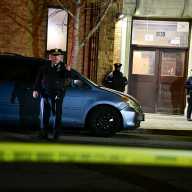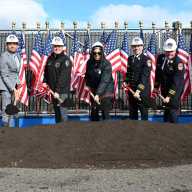By Kelsey Durham
As a battle against increased airplane noise reverberates across the city, some northeast Queens residents are lamenting readings from portable noise monitors that are registering levels as high as 96 decibels from planes flying in and out of LaGuardia Airport.
In response to a push from hundreds of community advocates who say the continuously growing jet noise is disrupting their quality of life, the Port Authority of New York & New Jersey has begun putting noise monitors in neighborhoods around the tri-state area.
The two newest devices in Queens were placed on top of a residential building in downtown Flushing and on a private home in the northern part of Bayside, and some residents say they have gotten “interesting” readings off the devices that contradict the efforts the Port Authority says it is making to combat the noise.
“Northeast Queens is getting hit really hard,” said Susan Carroll, a resident of the Flushing apartment building where the noise monitor sits.
Carroll said the Federal Aviation Administration has been directing planes to fly a route known as the TNNIS climb, which routes planes and their noise away from Arthur Ashe Stadium and into the residential sections of Flushing, more frequently in recent months than ever before. This has caused homeowners to endure the increase in noise that goes along with the change in flight paths, she said.
Since this year’s US Open began last week, Carroll said the route has been followed exclusively during the tournament and is causing even more noise to be rerouted over their homes.
“It’s been used a lot more than [the FAA] said it would be, so now this is where we find ourselves,” Carroll said.
Carroll has had the noise monitor on top of her building for about a month now and she said she checks it every day through the online system to see what kind of decibel readings are being registered. The 96-decibel reading was the highest she said she has seen so far, but she said the monitor usually registers average decibel readings in the mid-70s to low-80s.
A decibel level in the 80s is commonly compared to the noise from freight trains or helicopters at close distances. Any decibel level above 90, comparable to a motorcycle at a distance of 25 feet, is known as the point where hearing damage can start to occur if exposed long term, according to data from Purdue University.
A safe decibel level is considered to be under 65.
“The fact of the matter is that no residential area should be under planes that are flying at 96 decibels,” Carroll said. “That’s a harmful level and these planes are coming in every minute. When all the readings are really high, there’s something wrong here.”
Carroll said she continues to watch the noise levels that her neighborhood is subjected to and files complaints frequently with the Port Authority’s noise office. As she continues to be involved in the battle to lower the impact of increased air traffic, she said she remains hopeful that a solution is on the horizon.
“There needs to be a more unified effort to make this better for us because we can’t live like this,” she said.
Reach reporter Kelsey Durham at 718-260-4573 or by e-mail at kdurham@cnglocal.com.

































